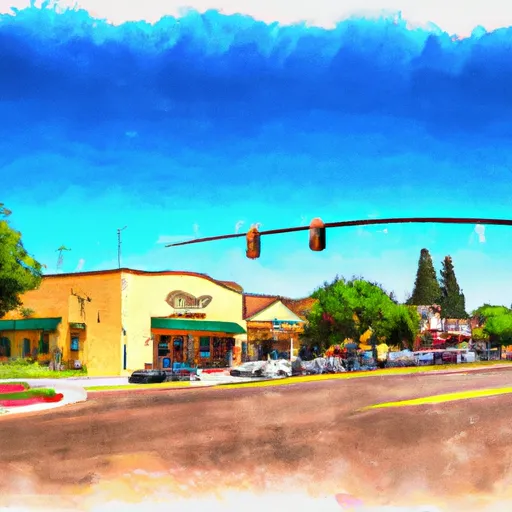-
 Snoflo Premium
Snoflo Premium
Get unlimited access to all our content
With no Ad interruptions! - Start Your Free Trial Login with existing account
Middletown
Eden Index
Climate
10.0
•
Recreation
5.3
•
Community
4.9
•
Safeguard
7.1/10

Middletown, California is a charming town located in Lake County. Known for its picturesque landscapes and recreational opportunities, the town boasts a Mediterranean climate characterized by hot and dry summers, while winters tend to be mild and wet. The average yearly temperature hovers around 65°F (18°C), making it a pleasant destination for outdoor enthusiasts.
Surrounded by natural beauty, Middletown offers various outdoor recreation opportunities. The town is in close proximity to Clear Lake, the largest freshwater lake in California, providing ample opportunities for fishing, boating, and water sports. Hiking enthusiasts can explore the stunning trails of Boggs Mountain State Forest, which encompasses diverse ecosystems and offers breathtaking views.
Additionally, hydrology plays a significant role in Middletown's landscape. The town is within the Clear Lake watershed, which contributes to the water supply for both drinking and irrigation purposes. The area's hydrology constituents include Clear Lake, Cache Creek, and various smaller streams, providing a habitat for diverse flora and fauna.
In conclusion, Middletown, California, with its Mediterranean climate, abundant hydrology constituents, and numerous outdoor recreation opportunities, offers a welcoming environment for residents and visitors alike to enjoy the natural beauty and engage in various outdoor activities.
What is the Eden Index?
The Snoflo Eden Index serves as a comprehensive rating system for regions, evaluating their desirability through a holistic assessment of climate health, outdoor recreation opportunities, and natural disaster risk, acknowledging the profound impact of these factors on livability and well-being.
Climate Health Indicator (CHI): 10.0
Middletown receives approximately
1056mm of rain per year,
with humidity levels near 63%
and air temperatures averaging around
15°C.
Middletown has a plant hardyness factor of
9, meaning
plants and agriculture in this region tend to thrive here all year round.
By considering the ideal temperature range, reliable water supplies, clean air, and stable seasonal rain or snowpacks, the Climate Health Indicator (CHI) underscores the significance of a healthy climate as the foundation for quality living.
A healthy climate is paramount for ensuring a high quality of life and livability in a region, fostering both physical well-being and environmental harmony. This can be characterized by ideal temperatures, reliable access to water supplies, clean air, and consistent seasonal rain or snowpacks.
Weather Forecast
Streamflow Conditions
Lower Sacramento
Area Rivers
Lower Sacramento
Snowpack Depths
Lower Sacramento
Reservoir Storage Capacity
Lower Sacramento
Groundwater Levels
Recreational Opportunity Index (ROI): 5.3
The Recreational Opportunity Index (ROI) recognizes the value of outdoor recreational options, such as parks, hiking trails, camping sites, and fishing spots, while acknowledging that climate plays a pivotal role in ensuring the comfort and consistency of these experiences.
Access to outdoor recreational opportunities, encompassing activities such as parks, hiking, camping, and fishing, is crucial for overall well-being, and the climate plays a pivotal role in enabling and enhancing these experiences, ensuring that individuals can engage in nature-based activities comfortably and consistently.
Camping Areas
| Campground | Campsites | Reservations | Toilets | Showers | Elevation |
|---|---|---|---|---|---|
| Sonoma County Fairgrounds RV Park | None | 173 ft | |||
| Bothe - Napa Valley State Park | None | 632 ft | |||
| Blue Oaks | 6 | 1,780 ft | |||
| Spring Lake Regional Park | None | 295 ft | |||
| Sugarloaf Ridge State Park | 49 | 620 ft | |||
| Napa County Fairgrounds | None | 364 ft |
Nearby Fishing
Nearby Ski Areas
Catastrophe Safeguard Index (CSI):
The Catastrophe Safeguard Index (CSI) recognizes that natural disaster risk, encompassing floods, fires, hurricanes, and tornadoes, can drastically affect safety and the overall appeal of an area.
The level of natural disaster risk in a region significantly affects safety and the overall livability, with climate change amplifying these risks by potentially increasing the frequency and intensity of events like floods, fires, hurricanes, and tornadoes, thereby posing substantial challenges to community resilience and well-being.
Community Resilience Indicator (CRI): 4.9
The Community Resilience Indicator (CRI) recognizes that education, healthcare, and socioeconomics are crucial to the well-being of a region. The CRI acknowledges the profound impact of these elements on residents' overall quality of life. By evaluating educational resources, healthcare accessibility, and economic inclusivity, the index captures the essential aspects that contribute to a thriving community, fostering resident satisfaction, equity, and social cohesion.

